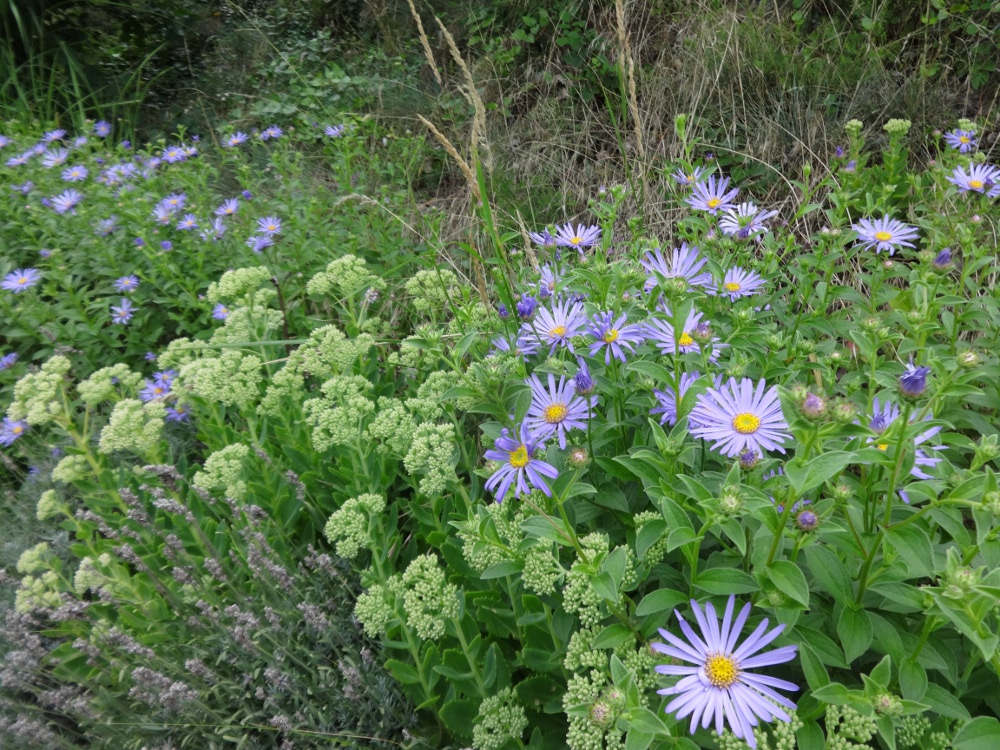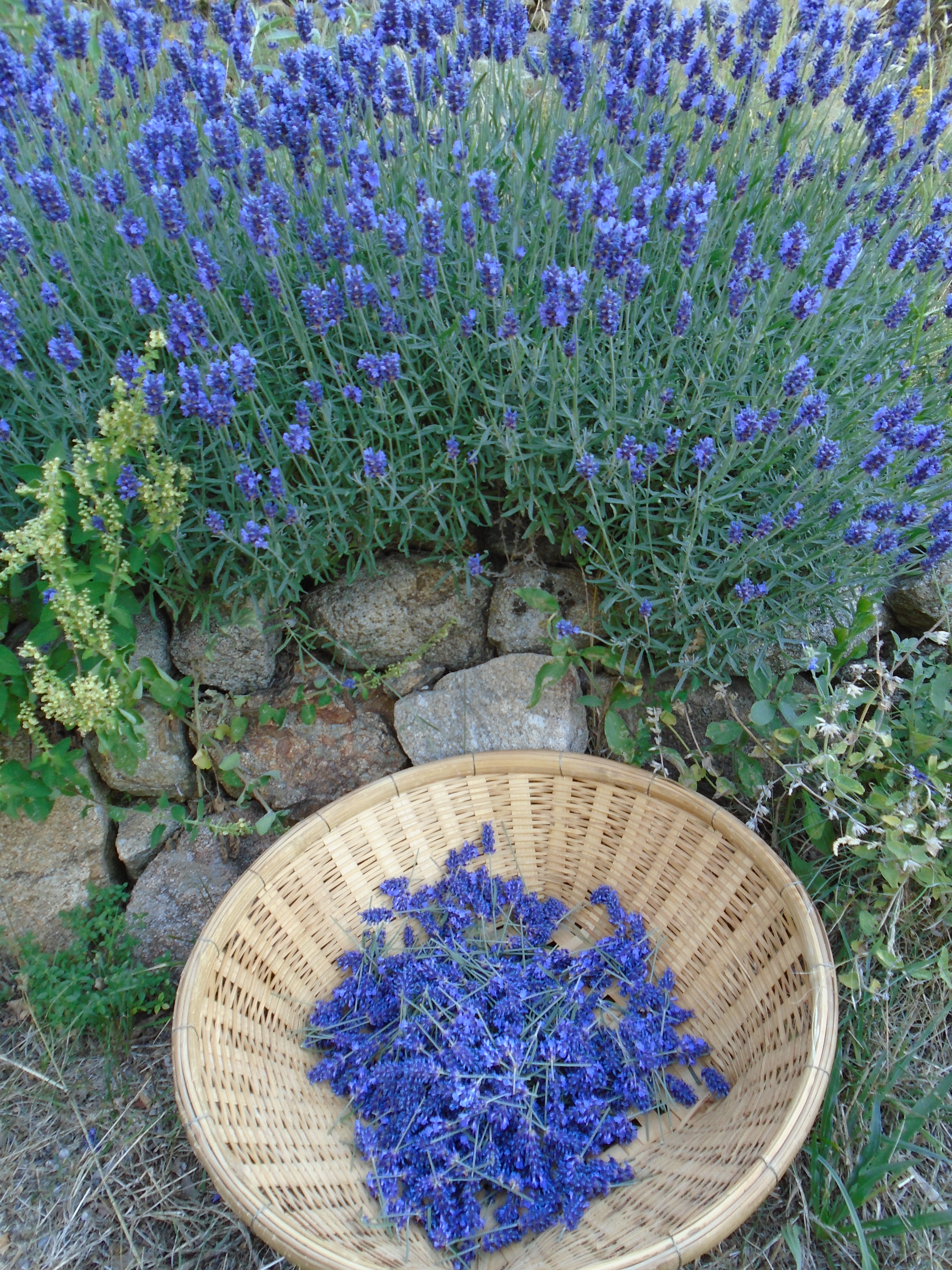The lilac bed – working with a small narrow space
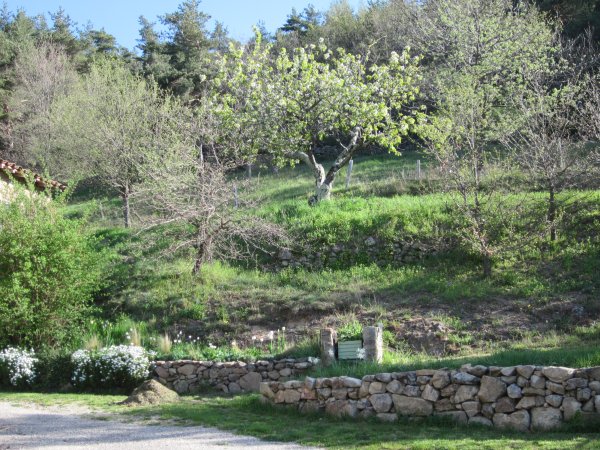 Don’t you find it strange that you can put more work, more plants and more designing into one of the smallest beds in your garden?
Don’t you find it strange that you can put more work, more plants and more designing into one of the smallest beds in your garden?
That’s how I feel about an area I call the lilac bed. It belongs just beside the guest house. And when we arrived, it contained a huge white lilac tree, a white mock orange shrub, and white alyssum.
The farm’s previous owners weren’t gardeners. But they had a go at planting up a themed area in front of the house. A white garden. There is also a gorgeous white wisteria nearby that completes the picture.
Eight years on, all the plants remain. But I have been battling them every single season.
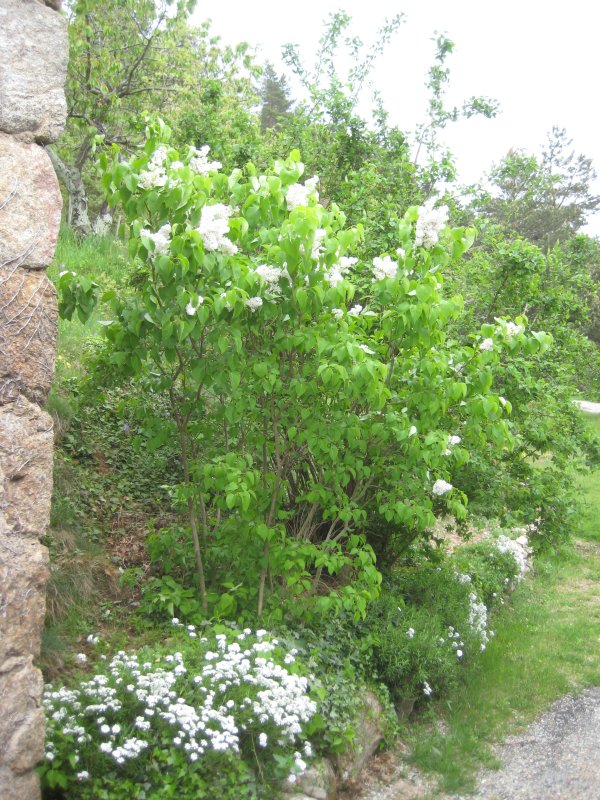 The lilac is the most unrewarding shrub I have ever met. It flowers for about ten days a year. In a good year. And as the flowers are white, they die back to a brown that looks ghastly. And yes, they have scent. But I just have trouble giving so much room to a plant that only performs for such a short season.
The lilac is the most unrewarding shrub I have ever met. It flowers for about ten days a year. In a good year. And as the flowers are white, they die back to a brown that looks ghastly. And yes, they have scent. But I just have trouble giving so much room to a plant that only performs for such a short season.
And then spends the rest of the year throwing up suckers. Light green. But I don’t have the heart to cut it down as it feels a bit cruel until I really can come up with a better plan.
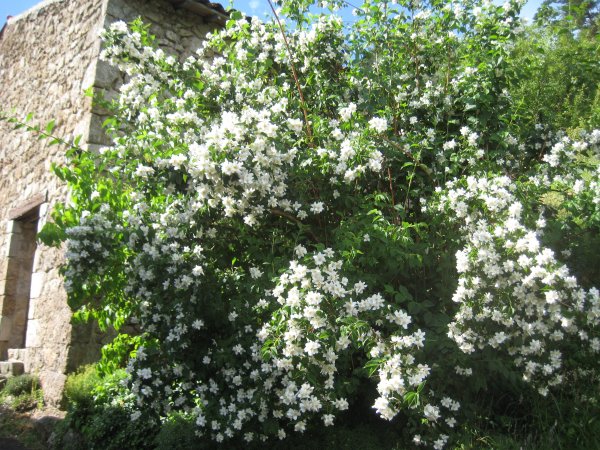 And the Philadelphus – a Deutzia – is the same. It wanted to be a beautifully scented Mock Orange shrub, but alas, it’s a lesser relation.
And the Philadelphus – a Deutzia – is the same. It wanted to be a beautifully scented Mock Orange shrub, but alas, it’s a lesser relation.
And my what a beast. It was left unchecked ever since it was planted and it’s trying to grow as tall as the house. And you guessed it. It flowers way up high.
When I look back through my notes I can see that I have tried to tame it thrice. Great efforts with loppers and saws and (I must confess) much swearing as I tried to get the branches out which have created a thicket of sticks.
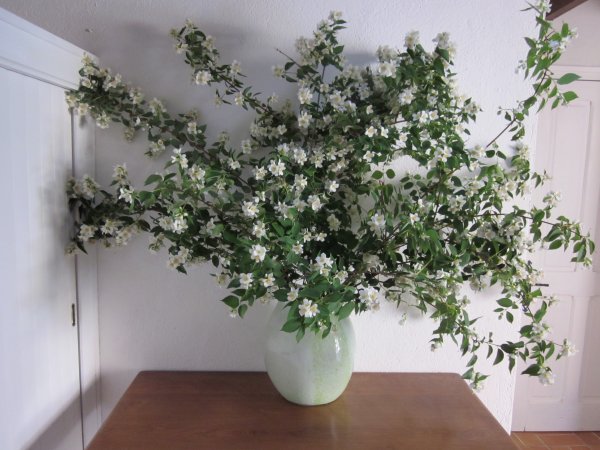 This past pruning was the most brutal. It has been reduced by a third in size at last. If I’m lucky, this radical pruning will eventually kill it and I can feel that I gave it eight good years, and it’s time to go. But somehow I doubt it. It just won’t flower next year.
This past pruning was the most brutal. It has been reduced by a third in size at last. If I’m lucky, this radical pruning will eventually kill it and I can feel that I gave it eight good years, and it’s time to go. But somehow I doubt it. It just won’t flower next year.
You only really grow this shrub for its scent. I have walked past some Philadelphus at my friend Leslie and Teo’s house that have you swooning from the smell.
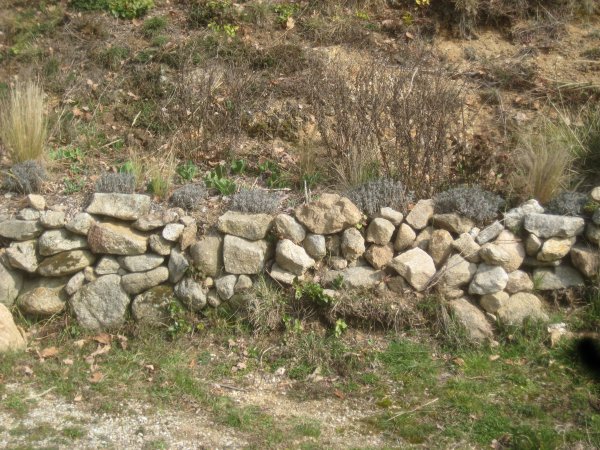 But ours? I didn’t even think it had a scent for the first five years. It certainly has no scent outdoors. Only if you cut the branches, bring it inside to the small closed confines of a room will you get a magical whiff. A fleeting whiff of a perfume that requires you to stick your nose right inside the flowers and inhale hard. Really hard.
But ours? I didn’t even think it had a scent for the first five years. It certainly has no scent outdoors. Only if you cut the branches, bring it inside to the small closed confines of a room will you get a magical whiff. A fleeting whiff of a perfume that requires you to stick your nose right inside the flowers and inhale hard. Really hard.
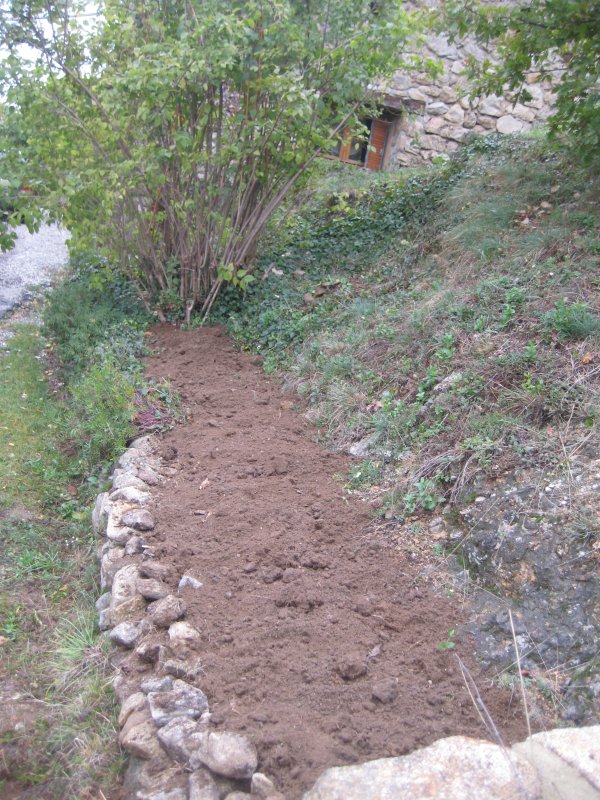 So I did what a lot of people do with a problem spot. I just tried to tame it and got on with something else.
So I did what a lot of people do with a problem spot. I just tried to tame it and got on with something else.
And for this lilac bed, that meant the rest of the long narrow bed that adjoins the shrubs. The alyssum grew prettily along the low stone wall. That was a start. But the rest? Oh my.
I can’t even remember what was planted in this bed. Apart from lilac suckers. Oh, and ivy. That must have been it.
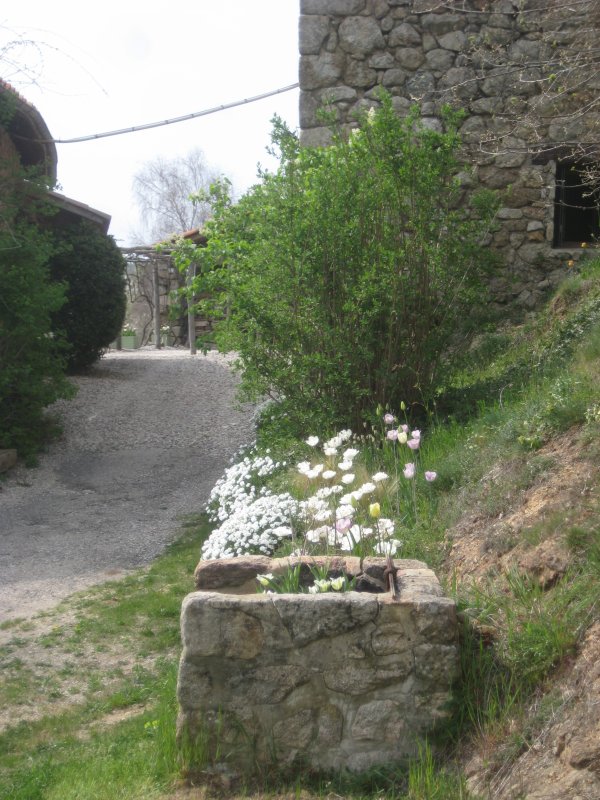 I cleared the whole bed and had a go at propping up the low stone wall. Lots of the stones had fallen away. Knocked into by careless reversing trucks.
I cleared the whole bed and had a go at propping up the low stone wall. Lots of the stones had fallen away. Knocked into by careless reversing trucks.
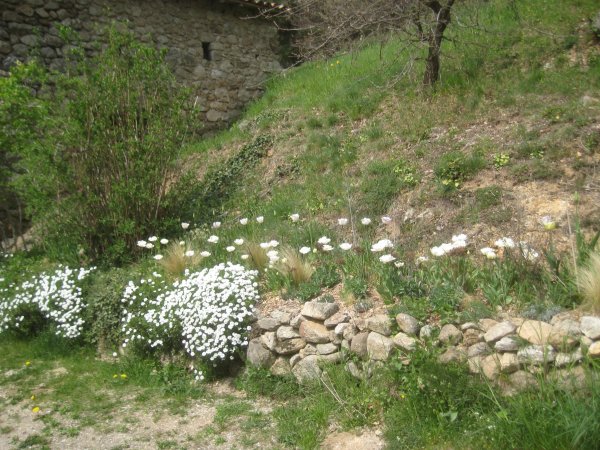 The first year I planted white tulips. Why fight against the white theme? And every year since I have been ‘having a go’ at improving it.
The first year I planted white tulips. Why fight against the white theme? And every year since I have been ‘having a go’ at improving it.
And I can honestly say that I’m not there yet.
The best thing I did. And heed this keen gardeners. Was to do what ought to have been done the very first time I clapped eyes on this problem.
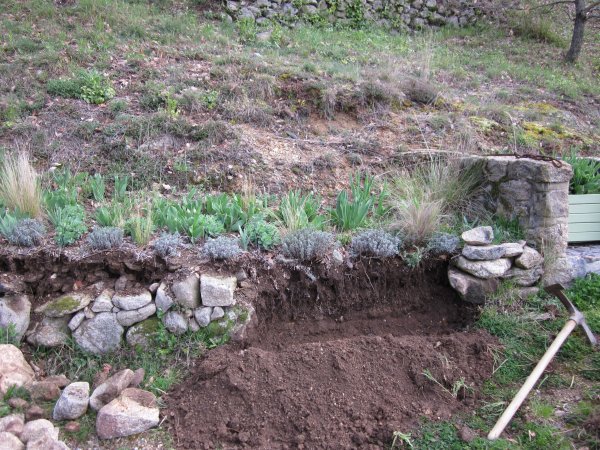 I employed a stone mason to repair the wall. What a difference. I have learned that framing a garden with hedging or a wall means you can’t really go wrong. At least you have something pleasing to look at, even if the plants aren’t quite right.
I employed a stone mason to repair the wall. What a difference. I have learned that framing a garden with hedging or a wall means you can’t really go wrong. At least you have something pleasing to look at, even if the plants aren’t quite right.
And this is one of the first things you see when you drive up to the farm. It didn’t create a pleasing impression to be confronted by a rubble field with weeds attached.
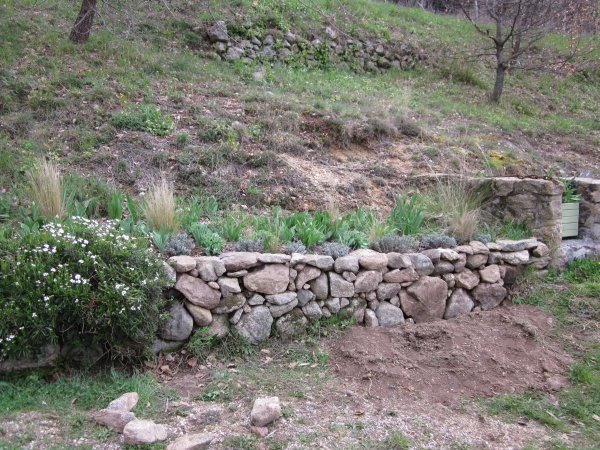
The granite rock that lies behind the bed is solid and impenetrable. And this part of the garden was created by clearing stones from a nearby terrace and just lobbing the smaller rocks into a pile.
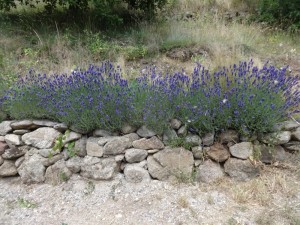
So picture a long narrow bone dry bed, not much soil, no watering unless I remember, and something that has to create a good impression.
Ugh.
Bulbs work. I plant tulips and alliums every year. And I put in a row of lavender Hidcote to give it some June colour after the alyssum has gone back to being a rather uninteresting alpine plant.
And then it was back to the old standby – sedums.
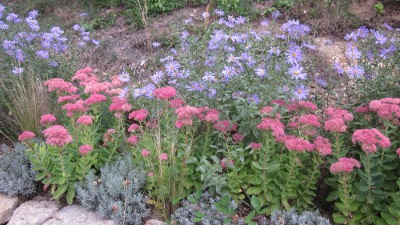
Every year I am adding more and more Sedum Herbstfreude (Autumn Joy). And no, I couldn’t spell it either. I had to look it up. And they are very easy to take cuttings and build up your stock. I find the best method is to wait until the plants are growing up and away and are about six inches tall; and then you just dig down to the base and pull off a few of the outside growth, with a bit of root attached, and pot it up into small pots with compost.
I tried just sticking a few cut stems in water to see if they root; and it does. But I never manage to get them from their watery environment into soil without breaking off a few fragile roots during the transplanting process.
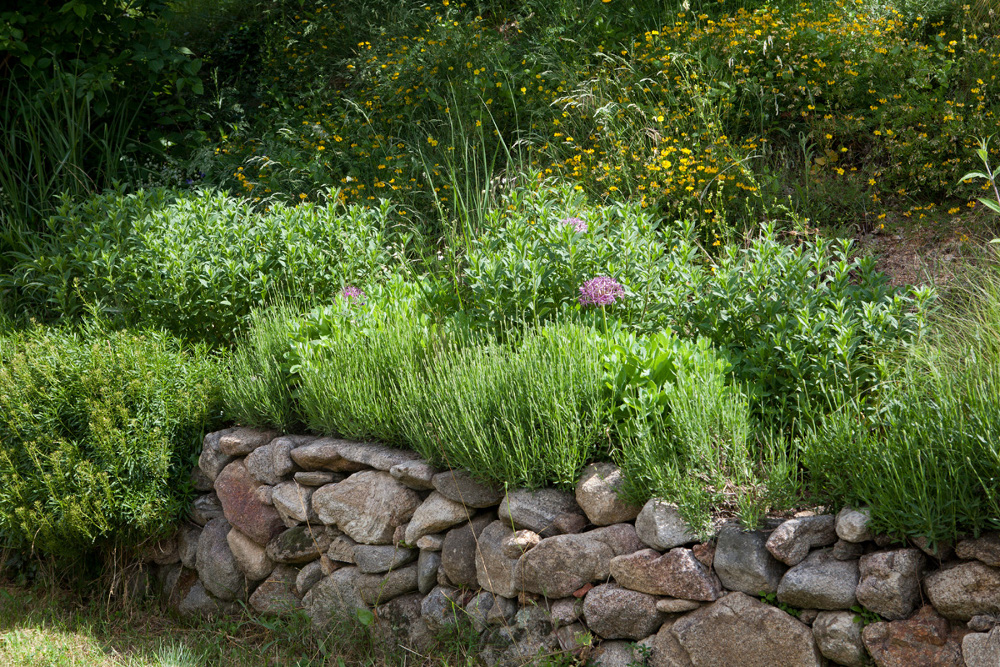
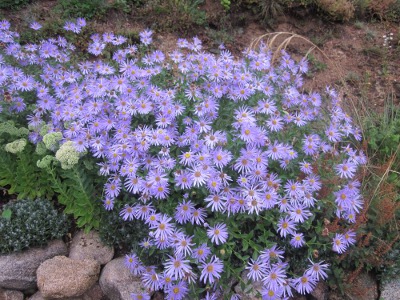
It will mean some of the beautiful wall will be hidden from view. But if it is the right plant, then it’s worth the aesthetic investment.
